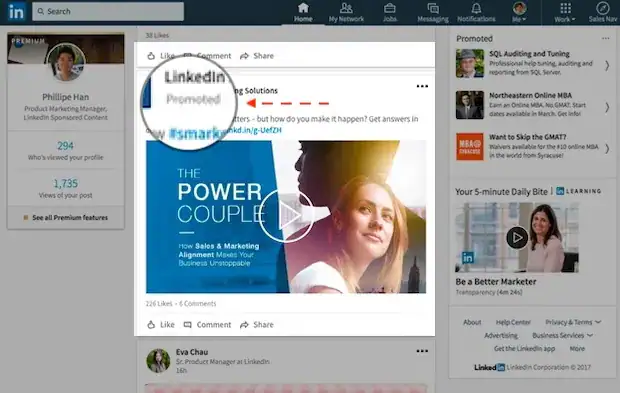10 Student Engagement Video Strategies
Engagement is the only way for an educator to know if her students are actually understanding the course content. This is equally true if you are teaching your students in a traditional classroom setting with a lecture hall or in remote learning using online resources. But while it may be easier to determine the level of engagement in a traditional classroom, the same cannot be said of an online classroom,

Yet, perhaps one of the best tools for engagement in any form of learning has made remote learning perhaps even more effective then a physical classroom. This tool is videos. Videos have the adaptability and capability to be incorporated into the tools you are using to promote and even enhance engagement in remote learning.
The following are just some of the student engagement strategies that you can use to ensure that your students are getting the most out of the class.
Using a Series of Video Clips
One of the best ways to use videos to promote engagement in your classroom is to plan your lesson around 4-5 video clips that you then share with your students. These can be screen-flow videos that you create yourself, videos that you find on YouTube or videos that were created by another educator.
Allow the students to watch the videos explaining the course material and then plan interactive exercises around what they have learnt. You can also allow them to form group discussions around the topic. This will not just deepen their understanding of the topic, but when one clip builds off another, the lesson is continuous and progressive in a way the students are likely to enjoy.
Ask Students to Create their Own Videos
Another way you can use to videos to keep your students invested in the lesson is to ask them to create their own videos in relation to the lesson. Perhaps they could create a video explaining how they arrived at answer (in math) or present an argument on a topic you raised in class.
Videos used in this way are a great way to promote creativity and the students will have so much fun creating the video, they will not realize that in participating, they are broadening the knowledge of the topic or course. To record a video on computer, I would recommend you to try Wondershare DemoCreator, an easy screen video capturing tool to create any screen activities with simple clicks.
Use Videos to Recap Course Work
Perhaps an even more effective use of your students’ video creating skills is to ask your students to create a video describing what they have learnt in a given day. You can ask them to create a short (about 10 sec) video of the lesson and what they understood from it and then send the video to you via email or post it on YouTube.
Reviewing the videos will help you assess where each student is in terms of understanding the topic. You can decide if you need to review the class or you can move on to other topics. You can also easily determine the students who will need additional assistance which you can then give one-on-one.
Use Videos for Group Collaborations
Every teacher understands the power of group collaborations when it comes to engagement. Videos can help you take this level of engagement one giant leap forward by allowing individual students to record recap video clips that they can share with other members of their group. Once each member of the group has assessed the clips, they can then combine all or some of the clips into a finished product that captures the ideas of all group members.
Collaboration in this way can help improve the learning process, pushing progress significantly forward. This is because students who are yet to understand the course topic can get valuable input from their peers in a language they can easily relate to. And in full confidence that no one can be left behind in this system, the teacher can move on to the next topic, pausing only to look at the group videos and make sure everyone is moving the right direction.
Use Movies to Keep Students Engaged
The occasional movie is another great way to keep your students engaged. While you may use movies as a reward for good work done over the course of a specified time (like a week or month), it is much more beneficial to ensure that even the entertaining movie is a learning experience. Pick a movie that is related to the coursework and then after the classroom movie time, have the students discuss amongst themselves some of the lessons they may have learnt from the movie.
Use Videos for Reflection
There are a lot of videos on YouTube and other sources online that are made to promoted reflection, positive thinking and deeper learning. Playing one of these videos occasionally in your class is another great way to keep your students engaged. The inspirational material that some of these videos provide will not just motivate your students to show up for class, but also remain engaged wit the content and learn much more than just the course topic.
The lessons these videos provide will shape your students for the future. But even in this, your students are far more likely to engage with the topic if there is a discussion about the video’s content soon after they watch it. Let them tell you what they learnt from the video and openly and honestly engage with them on the content.
Use Videos to Create Interactive Video Stations
Although this may sound a bit complicated, it is actually really easy to accomplish and one of the best ways to keep your students engaged even with the toughest course material. You just need to create a series of video clips for each lesson, each one leading to and connecting to the next lesson. Then place each clip in its own interactive station and have the students visit each station in groups.
If every station has its own lesson, then the students learn a part of the course with every station that they visit. It is therefore important to male sure that the lessons are in chronological order to make sure every student is starting from the beginning.
Create a Jigsaw Puzzle Using Videos
You well know the power that a jigsaw puzzle can have in learning. Creating jigsaw videos will further amplify this power, creating an environment of engagement that your students will be happy to participate in and even look forward to.
To use videos to create a jigsaw puzzle, set up interactive video stations as described above, but rather than having each student move from one station to the next, each group should only view one clip. Then allow the students to form groups to discuss the course material and “put it together” using the information each one has gathered while watching the clips.
Assign Homework using Videos
Rather than have your students read a section of a book or write an essay on what they have learnt, you can assign them a video to watch. They are far more likely to do their homework if the homework involves simply watching the video. And since this is an activity they are already engaging in, they are likely to engage in it whole heartedly.
For example, you can pick a video that explains a certain period in history related to the history lesson of the day. If the video is interactive enough, the students are far likely to learn from it than from any history book. And you can assess how much they have learnt by having them discuss the video in class.
Use Videos to illustrate and Demonstrate
There are some subjects that are too complex to be explained in words and this is where video can be a powerful teacher. You can create a video that explains and analyzes this difficult concept to make it easy for your students to understand it easily. If they see you do it, they are far more likely to grasp the concept than if they hear you talk about it and since video allows you to do both, there is nothing more powerful than a well-made demonstrative video.
 Secure Download
Secure Download Secure Download
Secure DownloadYou can easily accomplish this by creating a screen-flow video that shows how you go from the problem to the solution and the steps in-between. This can be particularly useful in math or other technical classes that require illustration and demonstration to be understood.
Videos are a powerful visual aid and very useful when explaining a concept to students. As such, more and more teachers are including videos in the learning process. It is our hope that the strategies above will help you easily incorporate video lessons into your classroom and use them to engage with your students.






